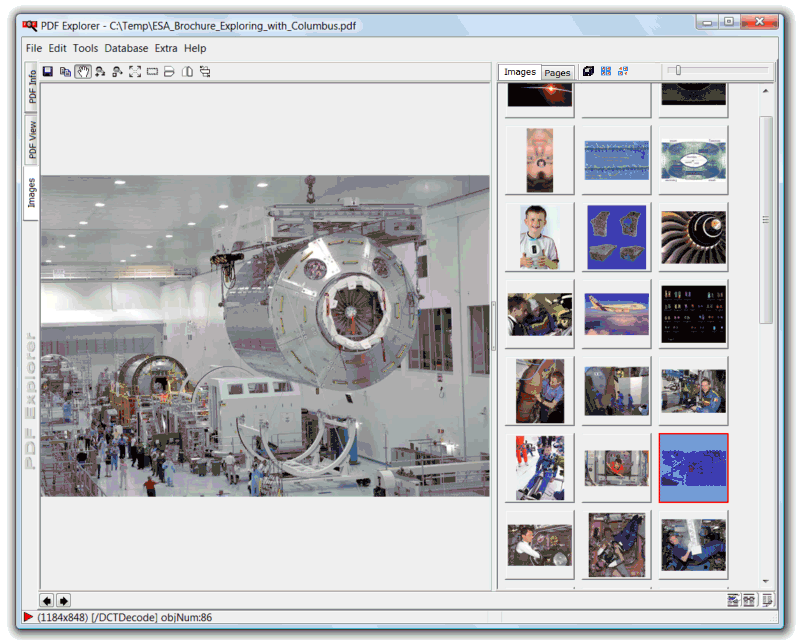When this view is activated, all raw image objects contained in the active document will be shown. We can just change to this tab view, or access it from menu Tools>ExtractImages, the grid popup menu or document toolbar button, if tab has been closed.

On the left, you will find the visualization and manipulation area of the images. On the right, thumbnails of all images contained in the document will be shown. The vertical bar which split these two areas can be moved to resize the two areas. Double clicking thumbnails will lead to the opening of the image in the visualization area.
Both these areas have their own toolbar, containing different tools.
This is the toolbar of the visualization/editing area on the left:

1- Save the image (or the selected part of it) into an external image file.
2- Copy the image (or the selected part of it) into the Windows clipboard, to use it with another software.
3- Move the image (to be used when the image is bigger than the visualization area).
4- Zoom tool. Zoom in left-clicking the image, zoom out right-clicking the image.
5- Area zoom tool. Define an area of the image which will be zoomed in order to fill the whole visualization area with it.
6- Left-click on this button to fit image to the visualization area, right click to see image with a 1:1 magnification ratio (real size).
7- Select an area of the image that can be saved, or copied into the clipboard with tools 1 and 2.
8- Mirror image on the horizontal midline.
9- Mirror image on the vertical midline.
10- Counterclockwise 90° rotate tool.
The thumbnails area on the right has the following toolbar:

1- Opens the export images tool, referring to the image objects the selected thumbnails link to.
2- Select all thumbnails.
3- Invert thumbnails selection. Thumbnails can be selected using the default windows commands (mouse+Ctrl and/or Shift, Ctrl-A, ... ).
The export tool is the same tool described for the Extract images batch tool